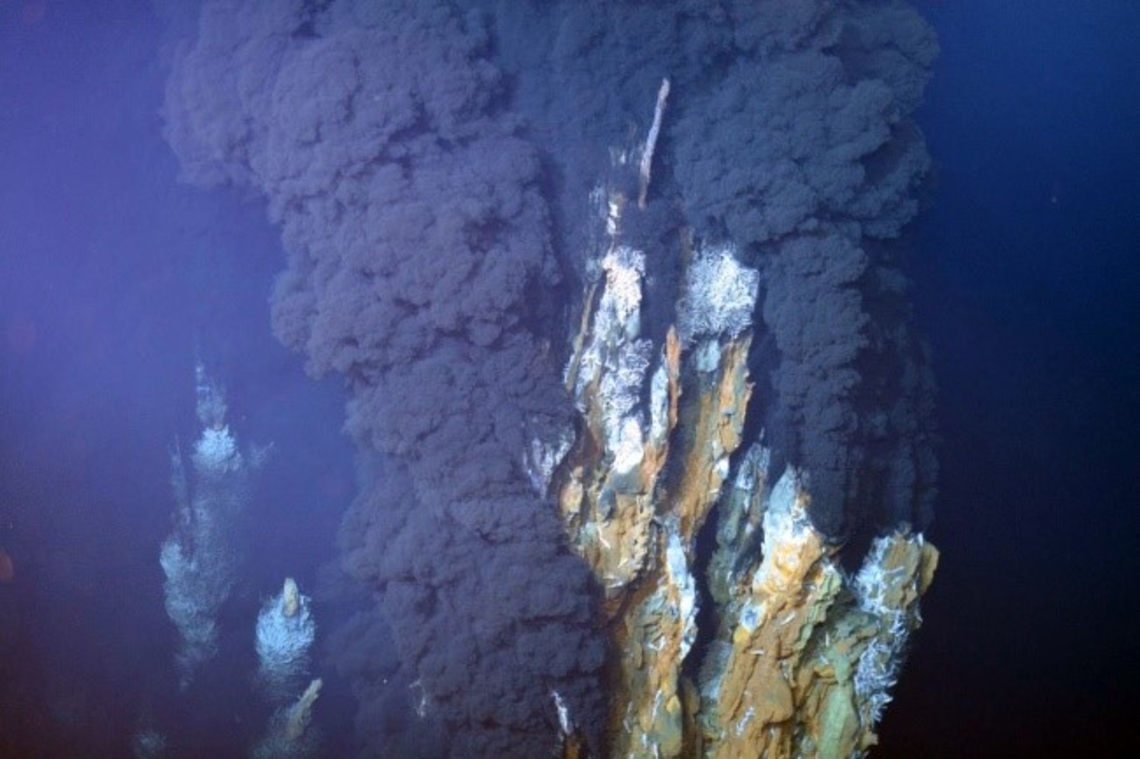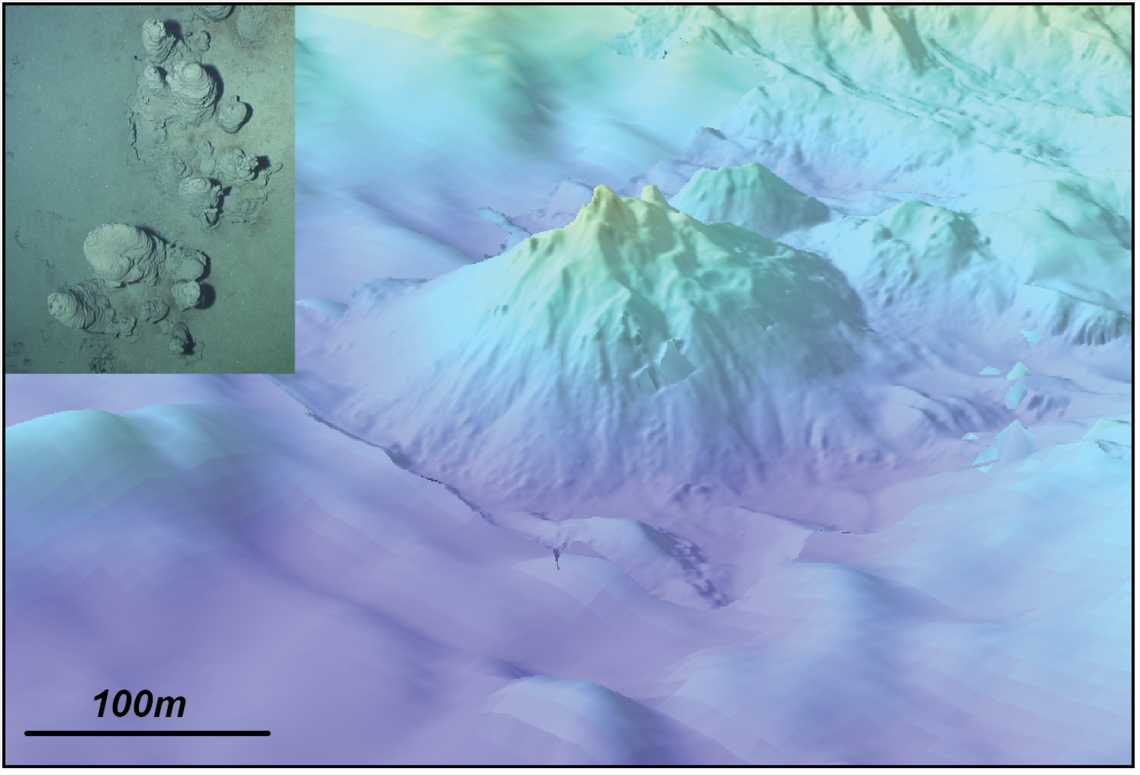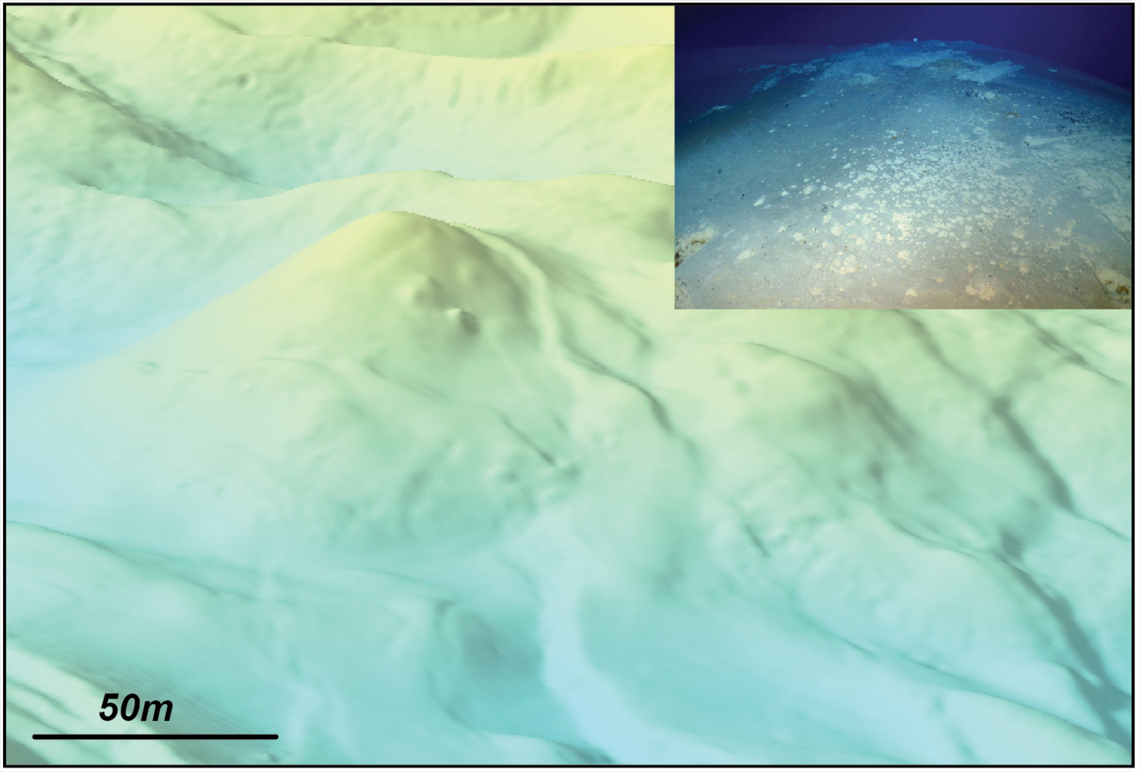WP2 Integrated and multidisciplinary definitions of active and inactive sulfide deposits
However, the majority of sulphide deposits in the oceans are 'inactive' and apparently much less colonised by living organisms than this 'epinal image' suggests.
Photos of sites in the TAG district showing different degrees of activity.
Active site of TAG showing the shrimp swarms (white spots) and the black smokers at 365°C. | Apparently inactive area of Mount Abyss |
What are the levels of activity of a sulphide mountain?
The TAG district, an area of almost 10 km2 located on the Medio Atlantic rift (Fig. 2), is composed of about twenty hydrothermal mounds with a wide range of activity levels. The most important activity is established on the summit of the Active Mound. This activity is characterised by a large biomass of microorganisms and shrimps fed by strong hydrothermal activity (Fig. 1A), which results in black smokers emitting fluids at over 365°C.
Indeed, active deep marine hydrothermal ecosystems depend on mineral and reduced energy sources that feed microbial communities capable of growing in the dark (chemosynthesis) and that feed the higher trophic levels (meiofauna and macrofauna).
Location of the TAG district on the North Atlantic Ridge. The other points correspond to other known hydrothermal sites |
However, the morphology of this deposit and the age measurements carried out on the sulphide mineralisations indicate that the Active Mound probably experienced more or less long periods of activity and inactivity over a period of almost 50,000 years. Thus, the notion of inactivity seems to be relative and, somewhat like volcanoes, some of these "inactive" sulphide mounds could be "dormant" while others would be totally extinct. Moreover, given the volumes represented by these habitats, they could also be home to a large microbial biomass.
The objective of WP2 is to identify geological, geochemical and biological parameters that allow the characterisation of the degree of activity of a sulphide mount and its dating.
What are the parameters that characterise the activity of a sulphide mountain?
There are several geological clues that can be used to recognise a "dormant" sulphide mount from a fossil mount and to date it (relative or absolute dating). The first criteria to be considered are the morphology of the site (obtained by mapping), the nature of the rocks (direct observation), the circulation of hydrothermal fluid and the presence of a pelagic sediment cover. Finally, it is also possible to take samples from the seabed and carry out age measurements using isotope methods (geochronology). For example, the "Shinkai" and "Rona" sites (TAG district; Fig.3) show very distinct morphologies, rocks and sedimentary cover (Fig.3). Although both are apparently inactive, it appears that the Shinkai site has experienced more recent hydrothermal activity than Mount Rona and may be reactivating.
Fig 3 : 3D view of the "Shinkai" sulphide deposit. This site is marked by very steep slopes and still has chimneys erected at the top. No high temperature activity is visible but this must have stopped recently. | 3D view of the "Rona" sulphide deposit. This site is marked by relatively shallow slopes and has no chimney still in place. It is covered by a thick sedimentary cover. The high-temperature hydrothermal activity has certainly been extinguished for a very long time. |
The definition of hydrothermal activity is not limited to geological criteria, and biological activity and diversity is an indirect indicator of the mineralogical and geochemical characteristics of these highly contrasting sites. As yet little explored, the diversity, abundance and metabolic activity of microorganisms associated with hydrothermal sites that no longer have fluid emissions could be similar to that of active sites (Fig. 4A).
In order to describe the functioning of these ecosystems, it is therefore necessary to characterise these parameters. This is particularly important because, as in active sites, microorganisms are central actors in the food chain of inactive sites. Moreover, in close interaction with microorganisms, the biomineralization carried out by benthic foraminiferal communities "imprison" elements of their intoxication in their calcareous shells and thus represent witnesses allowing the dating of the hydrothermal activity record in time (Fig. 4B).
The definition of hydrothermal activity is therefore also linked to the biological activity that characterises the sediments of a site and which can be largely influenced by hydrothermalism long after the end of fluid emissions.
Figure 4. A. Measurement of metabolic activity of microorganisms on Mount Abyss. | Figure 4. B. Scanning electron microscope images of benthic foraminiferal species around the Lucky Strike hydrothermal vents (mid-Atlantic margin) |








